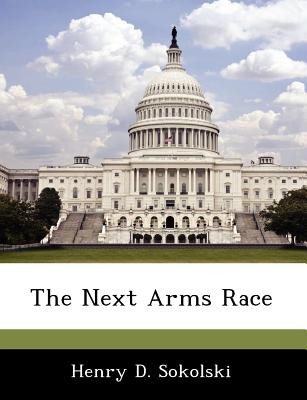
- We will send in 10–14 business days.
- Author: Henry D Sokolski
- Publisher: Bibliogov
- ISBN-10: 1249853834
- ISBN-13: 9781249853831
- Format: 18.9 x 24.6 x 2.7 cm, minkšti viršeliai
- Language: English
- SAVE -10% with code: EXTRA
Reviews
Description
The New Strategic Arms Reduction Talks (New START) agreement was reached in 2011, and both Russia and the United States are bringing nuclear strategic warhead deployments down to roughly 1,500 on each side. In the next round of strategic arms reduction talks, though, U.S. officials hope to cut far deeper; perhaps as low as several hundred warheads on each side-numbers that approach what other nuclear weapons states, such as France, China, Israel, India, and Pakistan either have or will soon possess. This, then, raises the question of how compatible such reductions might be with the nuclear activities of other states. How might Russia view the nuclear and military modernization activities of China? How might the continuing nuclear and military competition between Pakistan and India play out? What might the nuclear dynamics be between North and South Korea, Japan, and China? What might other states interested in developing a nuclear weapons option of their own make of the way the superpowers have so far dealt with the nuclear programs in India, Iraq, Iran, Syria, and North Korea? Are "peaceful" nuclear competitions in the Middle and Far East where states build up civilian nuclear programs to help them develop nuclear weapons options inevitable? What, beyond current nuclear control efforts, might help to reduce such nuclear threats? Each of these questions and more are examined with precision in The Next Arms Race.
EXTRA 10 % discount with code: EXTRA
The promotion ends in 21d.16:27:35
The discount code is valid when purchasing from 10 €. Discounts do not stack.
- Author: Henry D Sokolski
- Publisher: Bibliogov
- ISBN-10: 1249853834
- ISBN-13: 9781249853831
- Format: 18.9 x 24.6 x 2.7 cm, minkšti viršeliai
- Language: English English
The New Strategic Arms Reduction Talks (New START) agreement was reached in 2011, and both Russia and the United States are bringing nuclear strategic warhead deployments down to roughly 1,500 on each side. In the next round of strategic arms reduction talks, though, U.S. officials hope to cut far deeper; perhaps as low as several hundred warheads on each side-numbers that approach what other nuclear weapons states, such as France, China, Israel, India, and Pakistan either have or will soon possess. This, then, raises the question of how compatible such reductions might be with the nuclear activities of other states. How might Russia view the nuclear and military modernization activities of China? How might the continuing nuclear and military competition between Pakistan and India play out? What might the nuclear dynamics be between North and South Korea, Japan, and China? What might other states interested in developing a nuclear weapons option of their own make of the way the superpowers have so far dealt with the nuclear programs in India, Iraq, Iran, Syria, and North Korea? Are "peaceful" nuclear competitions in the Middle and Far East where states build up civilian nuclear programs to help them develop nuclear weapons options inevitable? What, beyond current nuclear control efforts, might help to reduce such nuclear threats? Each of these questions and more are examined with precision in The Next Arms Race.


Reviews